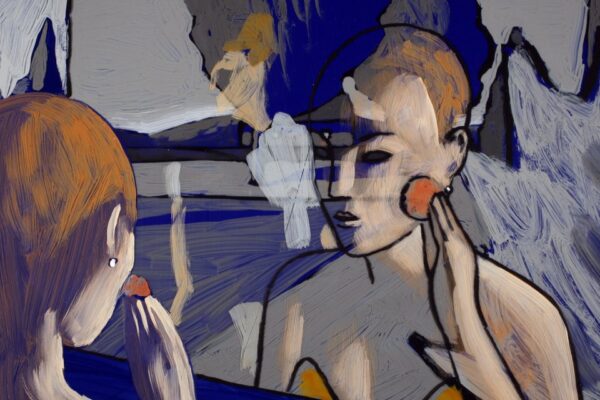
Georges Schwizgebel
Georges Schwizgebel is a Swiss animator, born in 1944 in Reconvilier, in the Canton of Bern (Bernese Jura). He is one of the great figures of Swiss animation cinema. His style is marked by a strong pictorial approach (we sometimes speak of “animated painting”) and by the preponderant place he gives to music. From 1960 to 1965 he followed the graphics section of the Geneva School of Fine Arts and Decorative Arts. In 1971 he founded the animation studio Studio GDS together with Claude Luyet and Daniel Suter, producing both commissioned and personal works. His works have been awarded several times at various festivals around the world. Several retrospectives have been presented in Nuremberg, Stuttgart, Tokyo, Osaka, Annecy, Montreal, Paris and New York. In 2012 the artist donated some of his drawings on paper, paintings on celluloid and pastels to the Cineteca Svizzera, thus constituting the Georges Schwizgebel Papers. He has received the Swiss Film Award twice: in 2002, for The Girl and the Clouds, and in 2016, for Il re degli altani (Erlkönig). In 2017, the Annecy International Animation Film Festival awarded him the Special Lifetime Achievement Award. His son, the pianist Louis Schwizgebel-Wang, performs music in some of his films. Georges Schwizgebel’s cinema leads to a baroque vision of the world, close to the spirit of the vanities of 17th century painting. The use of spiral movements, the figure of the skeleton and various evocations of emptiness and death that follow the agitation, play and celebration make many of his shorts a reflection on the futility of existence and the inexorability of death. . The Race to the Abyss, built around an aria taken from Berlioz’s La damnation de Faust, is an exemplary work in this sense.
Some of his films are based on mythological inspiration: Icare (The Flight of Icarus), Frankenstein (The Kidnapping of Frank N. Stein), Faust (The Race to the Abyss; The Man without a Shadow), but the painting remains its main reference source: The subject of the painting tells the search for a character who moves from one painting to another, from Vermeer to Manet, passing through Velasquez, while La Battaglia di San Romano proposes a reinterpretation of the famous painting by Paolo Ucello . Elsewhere in his work we find quotations from Matisse, De Chirico, Braque.
Finally, Schwizgebel prefers music to sound design, most of his films are mainly based on a piece of music: a musette waltz for 78 rpm, an extract from the opera La damnation de Faust for La course à l’Abîme, a composition original by Michèle Bokanowski in Fugue, the joke from the piano concert no. 2 by Prokofiev in Play, the cheerful joking of Rachmaninov’s Sonata for cello and piano in Romance (in), transcription for piano only written by Franz Liszt lieder Erlkönig in Schubert in The Erl King, etc.
Filmography
Le vol d’Icare (1974), Perspectives (1975), Hors-jeu (1977), Le ravissement de Frank N. Stein (1982), 78 tours (1985), Nakounine (1986), Le sujet du tableau (1989), La course à l’abîme (1992), L’année du daim (1995), ZigZag (1996), Fugue (1998), La jeune fille et les nuages (2000), L’homme sans ombre (2004), JEU (2006), Retouches (2008), Romance (2011), Chemin Faisant (2012), 1/3/10 (2012), the King of Alder (2015), The battle of San Romano (2017), Darwin’s Notebook (2020).
The Imaginaria festival will award a Special Career Award to Georges Schwizgebel on 22 August during the Cine-concert dedicated to him with the piano accompaniment of his son Louis Schwizgebel.





